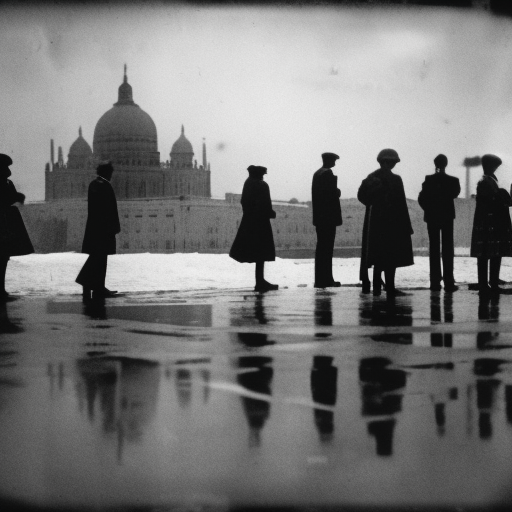The Cold War
The Cold War was a period of geopolitical tension between the United States and the Soviet Union, lasting from the end of World War II in 1945 until the early 1990s. It was characterized by political, economic, and military rivalry, as well as ideological differences between the two superpowers. Although direct military conflict between the United States and the Soviet Union was avoided, the Cold War had a profound impact on global politics and shaped the post-war world order.
Origins of the Cold War
The origins of the Cold War can be traced back to the end of World War II. The United States and the Soviet Union emerged as the two dominant powers, but their visions for the post-war world were fundamentally different. The United States championed democracy, capitalism, and individual freedoms, while the Soviet Union sought to spread communism and establish a socialist world order. These ideological differences, combined with mutual suspicions and a lack of trust, set the stage for the Cold War.
Key Events and Conflicts
The Cold War was marked by several key events and conflicts that heightened tensions between the United States and the Soviet Union. The Berlin Blockade and Airlift in 1948-1949 was one such event, where the Soviet Union attempted to block Western access to West Berlin. The United States responded by organizing a massive airlift to supply the city, ultimately forcing the Soviets to lift the blockade.
Another significant event was the Korean War (1950-1953), which began when North Korea, supported by the Soviet Union and China, invaded South Korea. The United States, along with a United Nations coalition, intervened to defend South Korea. The war ended in a stalemate, with the division of Korea into North and South along the 38th parallel.
The Cuban Missile Crisis in 1962 was a major confrontation between the United States and the Soviet Union. The Soviet Union had secretly placed nuclear missiles in Cuba, within striking distance of the United States. This led to a tense standoff, with the world on the brink of nuclear war. Eventually, a diplomatic resolution was reached, and both sides agreed to remove their missiles from Cuba and Turkey.
Arms Race and Space Race
The Cold War also witnessed an intense arms race between the United States and the Soviet Union. Both countries developed and stockpiled nuclear weapons, leading to a dangerous escalation of tensions. The doctrine of mutually assured destruction (MAD) emerged, which held that any nuclear attack would result in the total annihilation of both sides.
In addition to the arms race, the United States and the Soviet Union competed in the space race. The Soviet Union achieved several significant milestones, including launching the first satellite (Sputnik) and sending the first human (Yuri Gagarin) into space. The United States responded with the Apollo program, culminating in the moon landing in 1969.
End of the Cold War
The Cold War began to thaw in the 1980s, with the rise of Soviet leader Mikhail Gorbachev. Gorbachev introduced a series of reforms known as perestroika (restructuring) and glasnost (openness), aimed at revitalizing the Soviet economy and promoting political openness. These reforms, along with pressure from the United States and its allies, led to the gradual end of the Cold War.
The fall of the Berlin Wall in 1989 symbolized the end of the Cold War division in Europe. The Soviet Union itself faced internal turmoil and economic challenges, leading to its eventual dissolution in 1991. The United States emerged as the sole superpower, and the world entered a new era of global politics.
In conclusion, the Cold War was a period of intense rivalry and tension between the United States and the Soviet Union. It shaped the post-war world order and had a profound impact on global politics. The arms race, space race, and key conflicts such as the Korean War and the Cuban Missile Crisis were defining moments of the Cold War. Ultimately, the Cold War ended with the collapse of the Soviet Union and the emergence of the United States as the dominant superpower.












